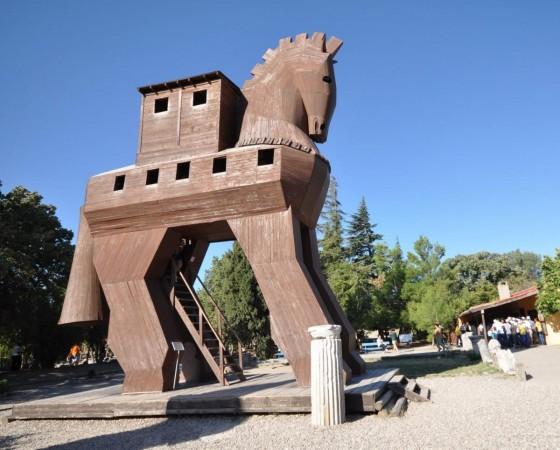Unfortunately, any mention of Trojan Horse at one point of time meant the infamous computer malware. But if the Turkish archaeologists are to be believed, then excavation at the site of the city of Troy on the hills of Hisarlik may have led to the discovery of the actual Trojan horse that led to the fall of the city of Troy.
![Archaeologists Discover remains of the Trojan Horse (Representational Image) ] Archaeologists Discover Remains Of Ancient Roman Plague Victims (Representational Image) [Wikimedia Commons/Yasser Nazmi]](https://data1.ibtimes.co.in/en/full/524333/archaeologists-discover-remains-ancient-roman-plague-victims-representational-image-wikimedia.jpg?h=450&l=50&t=40)
Archaeologists who earlier claimed that the large wooden structure unearthed was Trojan Horse, now say that their claims are backed by significant evidence, it was reported in the Greek Reporter.
The excavations undertaken also include dozens of fir planks, beams up to 49 feet long and assembled in a strange manner. As for the wooden structure believed to be the Trojan Horse, it was found inside the walls of the historic city of Troy.

The Jerusalem Post also reported that Boston University Professors Christine Morris and Chris Wilson believe that the tests and studies conducted align with the belief. "The carbon dating tests and other analysis have all suggested that the wooden pieces and other artefacts date from the 12th or 11th centuries BC." The professors also have, "high degree of confidence" that the structure discovered is linked to the iconic horse.
"This matches the dates cited for the Trojan War, by many ancient historians like Eratosthenes or Proclus. The assembly of the work also matches the description made by many sources. I don't want to sound overconfident, but I'm pretty certain that we found the real thing," they were further quoted as saying.
The legend of Trojan Horse
The legendary mythical horse has found a mention in history books to many a modern-day metaphor. After all, it's the horse that is primarily associated with Trojan War. The horse played a crucial factor in seizing Troy and winning the war.
Though many conspiracy theories and contradictions exist, historians have also suggested that the horse was nothing but an analogy for a war machine or stood for a natural disaster.
But the popular legend has it that the huge hollow wooden horse was constructed by the Greeks to deceptively gain entrance into Troy during the Trojan War. Despite the warnings and everything going against it, the horse was somehow taken inside the city gates. That was the tipping point in the war as the Greek warriors emerged from it and opened the gates and let in the Greek Army.
Many on social media didn't believe the claims to be completely true, unless the details of the scientific evidence were produced before them. But memes followed the reports, soon after.



















